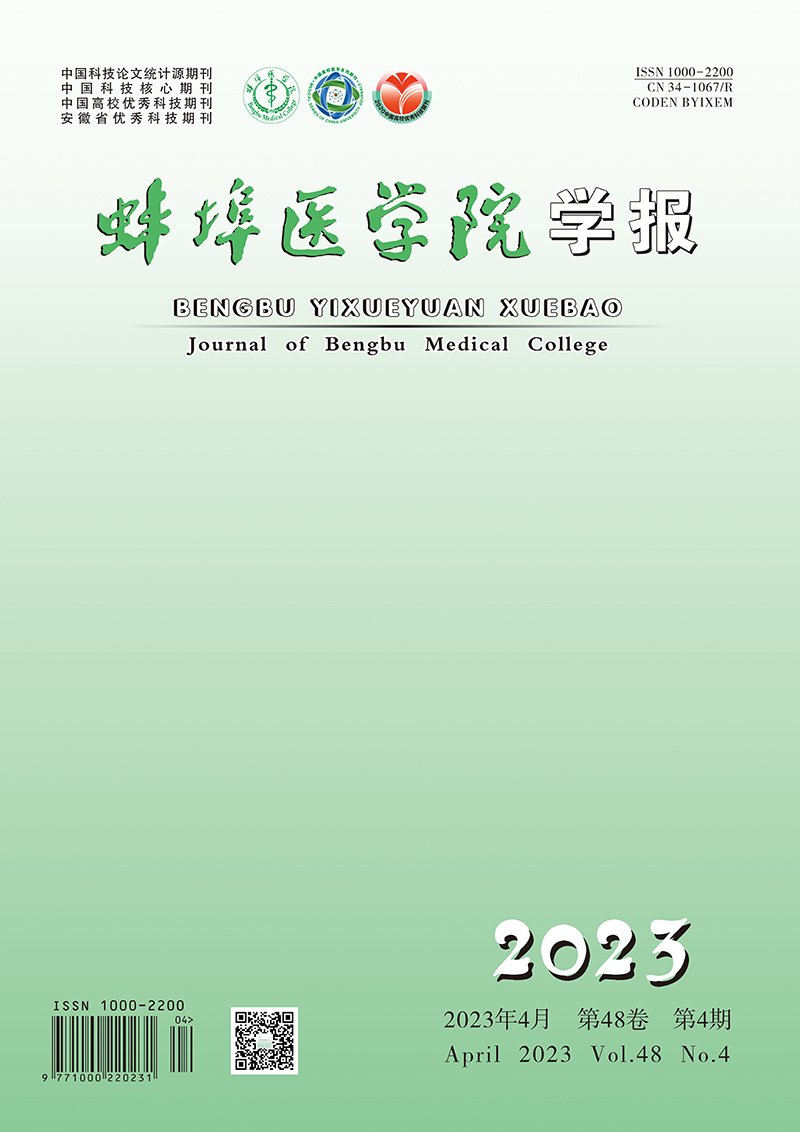-
血流感染(bloodstream infection, BSI)是指由于病原微生物入侵血液引起的全身炎症反应综合征。其发生发展遵循其自身的病理过程和规律,一般情况下危险系数高、进展缓慢、预后较差,若发现不及时会对全身脏器造成严重损害,最终导致死亡[1]。据报道,每年全球新增数百万BSI病人,其中超过四分之一死亡,BSI已成为美国第10位致死原因[2],病人每年花费达到140亿美元,在我国每年也有超过10万人因BSI而死亡[3],得到全球的高度重视。目前,国内外一致认为,诊断BSI的金标准为血培养,但是由于血培养周期长(一般为5~7 d)、易污染(多次、反复抽血及消毒不完全等原因)和阳性率低(有文献[4]报道,目前国内血培养的阳性率仅为16.9%)等原因,待诊断明确时,往往容易错过最佳治疗时机[5],给病人带来身体上、精神上和经济上的巨大负担。所以临床上急需一种早期、快速、有效的方法来诊断BSI。有研究[6]指出,BSI如果能够早期得到正确的诊断及治疗,病人存活率会得到大大的提高,1 h内得到正确诊断及治疗,其存活率可达80%,6 h内可达50%。因此,如何早期诊断、治疗BSI,降低死亡率显得十分重要。目前国内外研究较多的是降钙素原(PCT)和C反应蛋白(CRP)。本研究收集我院相关BSI病例,通过观察PCT和CRP在体内的水平变化判断其与BSI的关系,为临床提供相关科学依据。
HTML
-
收集2016-2017年于我院住院治疗的BSI病例(BSI组)及同期住院非BSI但有其他部位感染病例(非BSI组),各43例。BSI的判断标准参照《脓毒血症诊断标准》[7]:(1)体温>38 ℃或者 < 36 ℃;(2)血培养阳性;(3)排除其他系统疾病如血液系统、免疫系统疾病等引起的感染。BSI组男25例,女18例,年龄(44.6±28.10)岁;非BSI组男24例,女19例,年龄(40.1±27.23)岁。2组病例年龄、性别差异均无统计学意义(t=0.25, P>0.05;χ2=0.05,P>0.05)。收集2组病人在早期发生感染时(未经治疗前)PCT和CRP相关数据进行分析。
-
血培养采用法国梅里埃公司BACT/ALERT 3D型血培养仪进行检测;细菌鉴定及药敏采用法国梅里埃公司VITEK2-COMPACT型全自动细菌鉴定分析系统进行检测;PCT采用法国梅里埃公司MINI-VADIS型全自动分析仪进行检测, 检测原理为双抗夹心法,阴性值为 < 0.05 ng/mL;CRP采用美国贝克曼公司AU5800型全自动生化分析仪进行检测,检测原理为免疫比浊法,阴性值为 < 8 mg/L,所有试剂均为仪器原装配套。质控菌株为大肠埃希菌ATCC25922、铜绿假单胞菌ATCC27853、金黄色葡萄球菌ATCC29213和粪肠球菌ATCC29212,均由卫生部提供。
-
采用t′检验、χ2检验和ROC曲线。
1.1. 一般资料
1.2. 方法
1.3. 统计学方法
-
早期发生感染时(未经治疗前)BSI组PCT和CRP的水平均明显高于非BSI组(P < 0.01)(见表 1)。
分组 n PCT/(ng/mL) CRP/(mg/L) BSI组 43 7.85±6.94 109.89±53.10 非BSI组 43 0.15±0.12 53.02±21.06 t′ — 7.27 6.53 P — < 0.01 < 0.01 -
43例BSI病人中感染革兰阳性球菌15例(34.9%),革兰阴性杆菌28例(65.1%)(见表 2)。
病原菌 株数 构成比/% 革兰阳性菌 15 34.9 链球菌 8 18.6 金黄色葡萄球菌 4 9.3 肠球菌 3 7.0 革兰阴性菌 28 65.1 大肠埃希菌 18 41.9 肺炎克雷伯菌 6 13.9 其他 4 9.3 合计 43 100.0 -
革兰阳性球菌所致BSI病人PCT和CRP水平均明显低于革兰阴性杆菌所致BSI病人的水平(P < 0.01)(见表 3)。
分组 n PCT/(ng/mL) CRP/(mg/L) 革兰阳性菌 15 2.09±1.57 63.57±28.60 革兰阴性菌 28 10.93±6.73 134.70±46.19 t′ — 6.62 5.42 P — < 0.01 < 0.01 -
PCT在区分革兰阳性菌和革兰阴性菌感染时ROC曲线下面积为0.976,临界值4.19,敏感度和特异度分别为86.7%和96.4%;CRP在区分革兰阳性菌和革兰阴性菌感染时ROC曲线下面积为0.886,临界值为115.3,敏感度和特异度分别为94.55%和78.6%。
2.1. 2组病人早期发生感染时(未经治疗前)PCT和CRP水平的比较
2.2. BSI病人感染病原菌的构成情况
2.3. 不同类型病原菌所致BSI病人PCT和CRP水平的比较
2.4. 不同类型细菌感染时PCT和CRP的ROC曲线分析
-
BSI会危及病人生命,在医院得到越来越多的重视,特别是一些免疫力低下、抵抗力弱的病人更容易发生BSI。本研究发现,BSI病人感染细菌主要为金黄色葡萄球菌、链球菌、大肠埃希菌和肺炎克雷伯菌,这与国内相关报道[8-9]基本一致。这些细菌均为机会性感染型,在机体免疫力下降、患有基础疾病以及过度使用抗菌药物等情况下会发生机会性感染,提示临床要加强这类病人的监测与管理,特别是针对小儿科、感染科、肾脏内科及老年病科等就诊及住院病人应加强管理,尽量做到及时发现、及时治疗。
PCT是一种蛋白质,来自定位于第11号染色体上(11p15, 4)的由2 800个碱基对组成的单拷贝基因,转录后在甲状腺滤泡旁细胞内翻译成降钙素前体,降钙素前体再经过剪切,生成含有116个氨基酸的PC,是一种无活性的降钙素的前肽物质。正常情况下,人体内PCT含量极少,但是当机体出现炎症反应特别是细菌感染时,PCT会在内毒素等细胞因子的诱导下大量分泌,一般2~3 h开始增加,6~8 h体内浓度快速升高,12~48 h达到峰值,2~3 d后恢复正常[10]。由此可见,PCT对诊断细菌感染具有重要价值,并且可以提高诊断的准确度[11]。本次研究中,BSI病人体内PCT上升水平比患有其他部位感染病人的上升水平显著提高,同时随着PCT水平的不断上升,发生BSI的概率也会随之增加,提示临床可以根据PCT上升水平来预警病人是否会存在BSI的风险,早期、及时抗BSI治疗,并且合理应用抗菌药物,降低病死率。本研究结果显示,病人因感染革兰阴性菌致BSI时其体内PCT上升水平明显高于革兰阳性菌所致BSI的水平,提示临床可以根据PCT上升水平初步判断为哪类细菌感染,使经验性用药相对准确,减少病人不必要的负担,降低医疗风险。
CRP是一种经典的急性时相蛋白,编码基因位于1号染色体上(1q21-q23),包含224个氨基酸,是一种极其灵敏的急性时相反应指标,在创伤、感染、炎症、肿瘤等时会显著上升,可达正常值2 000倍以上。本研究显示,BSI病人体内CRP上升水平明显高于其他部位感染者水平,因此,亦可以将CRP作为BSI的诊断指标之一。但有报道[12]指出,当病人有支原体、衣原体和病毒等感染时,其体内CRP水平变化并不敏感,因此,必须联合其他感染性指标进行评价和诊断。
ROC曲线分析显示,在不同细菌感染时,PCT和CRP曲线下面积均>0.5,但PCT特异性和灵敏度更高,CRP缺乏有效的特异性,只能作为普通的感染指标判断是否存在炎症反应,提示临床,在监测BSI时,应联合应用PCT和CRP,才能提高灵敏度及准确性。
综上所述,PCT联合CRP诊断早期BSI具有一定的价值,可初步判断BSI的致病菌类型,使临床经验性用药更加准确,具体用药方案需要根据血培养的明确结果进行选择。及时采取PCT、CRP联合血培养检查能提高BSI临床治疗效果,降低病人死亡率,具有良好的临床应用价值。






 DownLoad:
DownLoad: